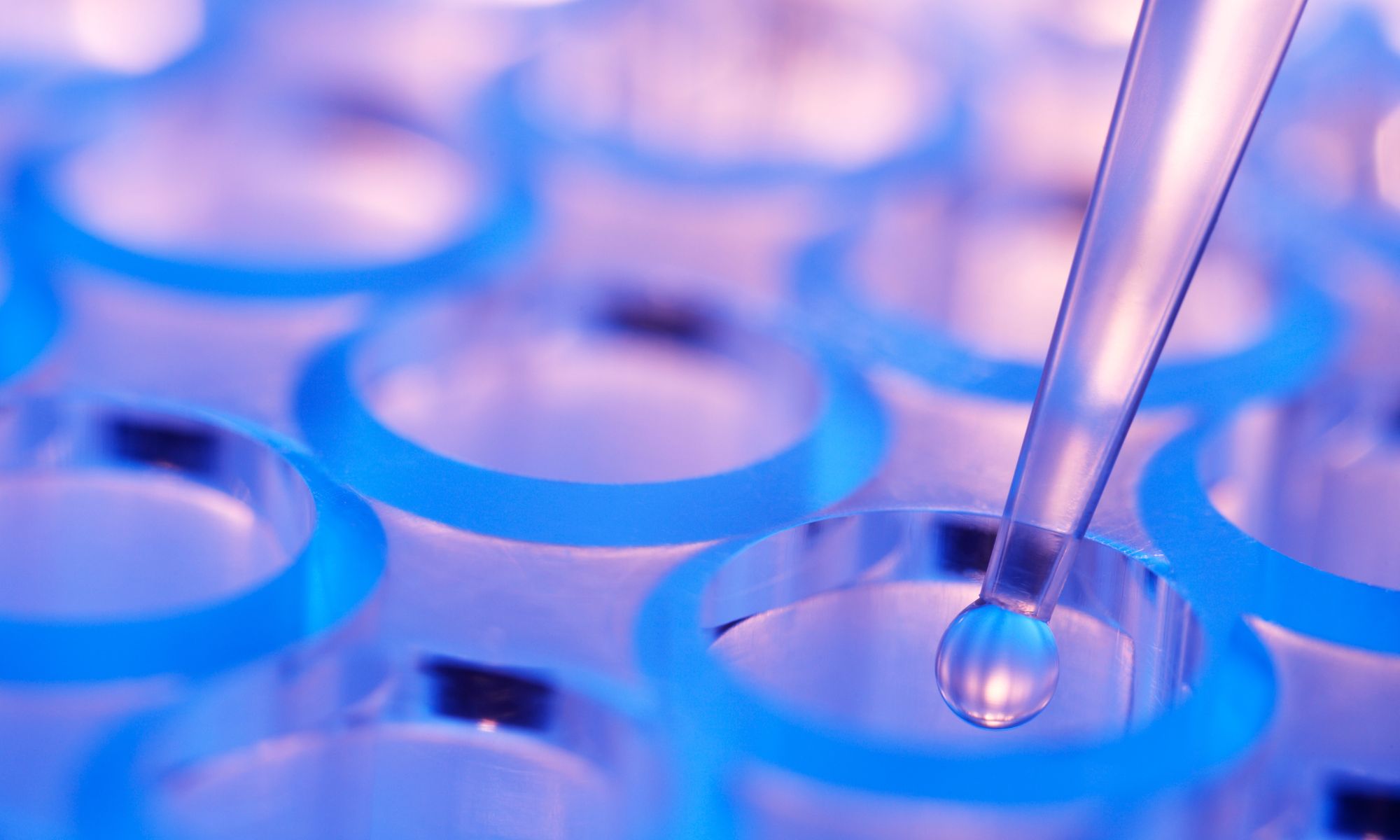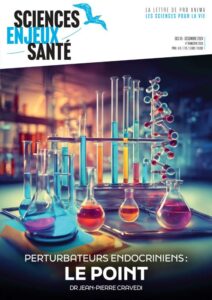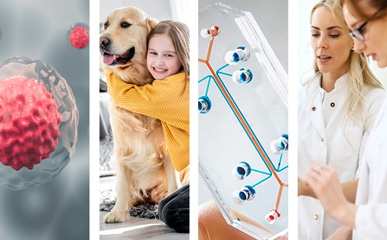
NAMWISE project, Research Modernization NOW, OoC applications summary, Multi-MPS platforms, and more
News on non-animal methods
FEB. 03 - 07, 2025NEWS, REPORTS & POSITION STATEMENTS
1. Launch of the European NAMWISE project in (eco-)toxicology
The NAMWISE project (NAMs Within Integrated Safety & Efficacy evaluation of chemicals and pharmaceuticals) has been selected for funding under the Horizon Europe research program. Coordinated by Ineris, NAMWISE is a Coordination and Support Actions (CSA) financed up to €2 million by the European Union, for a period of 30 months.
NAMWISE aims to promote the use of new methods (NAM) to characterize the hazards and (eco-)toxicological risks of chemicals as well as the efficacy of pharmaceuticals. The project is targeted on alternative methods to animal testing for regulatory purposes, and will feed into the European Commission’s roadmap. It brings together 18 partners of 8 different nationalities, a multidisciplinary consortium including academics, NAM developers and users and regulatory evaluators.
2. Research Modernization NOW
The increasing development and implementation of non-animal technologies together with the US society’s growing rejection of experiments on animals make a compelling case for decision-makers to plan for the phase-out of animal experimentation.
“Research Modernization NOW”, a new report from the Science Advancement and Outreach (SAO) consortium of PETA, reflects recent policy changes, new scientific findings, updated economic projections, and an increased sense of urgency in enacting its recommendations. The plan includes nonsequential, actionable recommendations, each capable of independently transforming the research landscape.
3. Use of alternatives to animal testing for Environmental Safety Assessment (ESA)
Environmental Safety Assessments (ESA) are mandatory for several regulatory purposes and are an important component of sustainability initiatives. Alternative methods are becoming more available, but their regulatory incorporation is still limited.
A cross-sector review by the European Partnership for Alternative Approaches to Animal Testing (EPAA), discussed the status and priorities for accelerating the adoption of non-animal approaches in ESA. The lack of an internationally agreed definition for “animal testing” was recognized as a challenge. Case studies under the OECD Integrated Approaches to Testing and Assessment (IATA) program could facilitate further global regulatory uptake. The review also agreed that the long-term aspiration is a new ESA paradigm, mapping the protection goals and providing connectivity between the chemical legislation and environmental protection policies.
4. Human-based complex in vitro models : their promise and potential for rare disease therapeutics
Rare diseases represent a significant disease burden impacting up to 10% of the world’s population while there are no approved treatments for almost 95% of these diseases and the existing treatments are cost-intensive for the patients. Complex in vitro models (CIVMs), including those using induced pluripotent stem cells (iPSCs), organoids, and organs-on-chips are emerging as powerful human-based pre-clinical systems with the capacity to provide efficacy data enabling drugs to move into clinical trials
In a narrative review, the authors discuss how human relevant CIVM are being used in clinical trials to develop efficacy models for rare diseases and propose recommendations on how these models could be leveraged to increase translatability of basic, applied and nonclinical research outcomes in the field of rare disease therapeutics in developed as well as middle-and low-income countries.
INTERVIEWS, NOMINATIONS & AWARDS
5. Dr. Ellen Fritsche receiving the prestigious Poulsson Medal
Dr. Ellen Fritsche received the prestigious Poulsson Medal from the Norwegian Society for Pharmacology and Toxicology (NSFT). This remarkable honour recognizes her groundbreaking work and outstanding contributions to neurodevelopmental toxicology by developing the DNT In Vitro Battery.
NSFT will invite her to give her Poulsson lecture in Norway. The date for this event will be announced later, and during this arrangement, this year’s winner will be presented with the Poulsson medal.
6. Replacing animal testing : Organoids and AI with Thomas Hartung
In a podcast episode of FYI, Brett Winton and Nemo Marjanovic sit down with Professor Thomas Hartung, a leading expert in biomedical innovation at Johns Hopkins Bloomberg School of Public Health.
They explore how human organoids — 3D organ proxies — are revolutionizing drug discovery and toxicology testing by reducing reliance on animal models. Professor Hartung explains how advancements in stem cell science, microfluidics, and artificial intelligence are converging to accelerate clinical trials, increase safety, and lower costs. The conversation also delves into the ethical considerations of biological computing, where organoids may one day aid in cognition and pattern recognition tasks.
TOOLS, PLATFORMS, CALLS
7. Closing the gap – validating and implementing NAM in a regulatory context (ValNAM)
VDI/VDE Innovation + Technik GmbH, a leading service provider for issues related to innovation and technology, launched a call for validation of new approach methods in a regulatory context, with the ultimate goal to implement new animal-free, human relevant methods as OECD guidelines or establish qualified models to be used in efficacy testings for new pharmaceuticals.
Projects are expected to increase in technology readiness levels during the duration of the project, thus enabling them to prepare documentation for a timely (2 – 3 years post project finalisation) regulatory evaluation and approval, if feasible. Submission deadline : 28.04.2025.
8. Young Data Scientist of the Year 2025
Are you a young data scientist with a compelling story to tell about your achievements ? Can you demonstrate impact and innovation ? If you can answer yes to these questions then you could win the Pistori Alliance 2025 Young Data Scientist of the Year Award which seeks to recognise, reward and nurture this vital talent in the life sciences industry.
INDUSTRY, BIOTECH & PARTNERSHIPS
9. Organ-on-chip applications by organ type – what has been done ?
In a previous blog, Dynamic42 talked about applications of organ-on-chip technology for biomedical research and drug development.
A new blog aims to provide you with examples for specific organ models that have been used in the past, providing the respective literature. If you start looking, you will be able to identify original research on more applications than the ones listed. There are too many to mention them all, the aim being to provide a good overview to start with.
10. MIMETAS Launches OrganoPlate UniFlow Technology
MIMETAS, a global leader in human disease modeling, has launched OrganoPlate UniFlow (UF), the first commercially available unidirectional, gravity-driven pumpless flow system for drug discovery and disease research.
OrganoPlate UF addresses challenges in traditional flow systems by enabling physiologically accurate tissue models that replicate natural biological conditions. Supporting up to 512 chips in a single setup, the technology is adapted for rigorous scientific studies and large-scale screening, accelerating research without compromising biological relevance.
SCIENTIFIC DISCOVERIES & PROTOCOLS
11. GARDskin dose-response assay for skin sensitization potency and quantitative risk assessment
A new study focused on testing a new in vitro method, GARDskin Dose-Response (DR), to predict the quantitative potency of fragrance ingredients in causing skin sensitization ; important for setting safe levels of chemicals in consumer products. One hundred fragrance ingredients with different chemical structures and reactivity patterns were tested.
The assay accurately distinguished between sensitizers and non-sensitizers for 81% of the materials, and also correctly predicted their approximate potency categories. The results show that GARDskin DR is a promising tool for predicting quantitative potency for skin sensitization risk, helping to reduce animal testing and support safer product development.
12. Multi-MPS platforms for translational pharmacokinetic and pharmacodynamic applications
Microphysiological systems (MPS) provide relevant physiological environments in vitro for studies of pharmacokinetics, pharmacodynamics and biological mechanisms for translational research.There is an immediate need for a mechanistic approach to design multi-MPS platforms.
A recently published work provides a novel multi-functional scaling approach to design integrated multi-MPS platforms, which is adaptable to various research interests, e.g. different MPS types or arrangements and study objectives (pharmacokinetics, pharmacodynamics, disease models).
Read the article in Integrative Biology
13. Rapid and scalable personalized screening in patient-derived organoids
Personalized antisense oligonucleotides (ASOs) have achieved positive results in the treatment of rare genetic diseases. As clinical sequencing technologies continue to advance, the ability to identify patients with rare disease harbouring pathogenic genetic variants amenable to this therapeutic strategy will probably improve.
A new study published in Nature describes a scalable platform for generating patient-derived cellular models and demonstrates that these personalized models can be used for preclinical evaluation of patient-specific ASOs. The approach provides the foundation for an expedited path towards the design and preclinical evaluation of personalized ASO therapeutics for a broad range of rare diseases.


